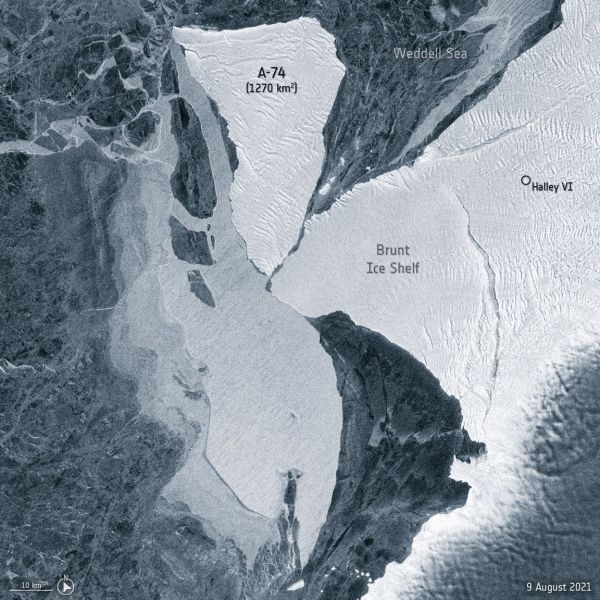Over the last six months, it has remained close to the shelf it broke away from owing largely to ocean currents. In early August, strong easterly winds have spun the iceberg around the western tip of Brunt, brushing slightly against the ice shelf before continuing southwards. Radar images, captured by the Copernicus Sentinel-1 mission, show the movement of the 1270 sq km berg from 9 until 18 August.
For years, glaciologists have been monitoring the formation and extension of the fractures, known as rifts, and the opening of large chasms in the 150 m thick Brunt Ice Shelf. Chasm 1, the large crack running northwards from the southernmost part of Brunt, is narrowly separated from the more recent Halloween crack.
Had the drifting iceberg hit the unstable ice shelf with severe force, it may have triggered the release of a new 1700 sq km-sized iceberg. Despite reports of a minor impact, the prospective berg remains tenuously attached in the vicinity of McDonald Ice Rumples, where the ice shelf is locally grounded on the seabed.
Continue reading at European Space Agency
Image via European Space Agency


